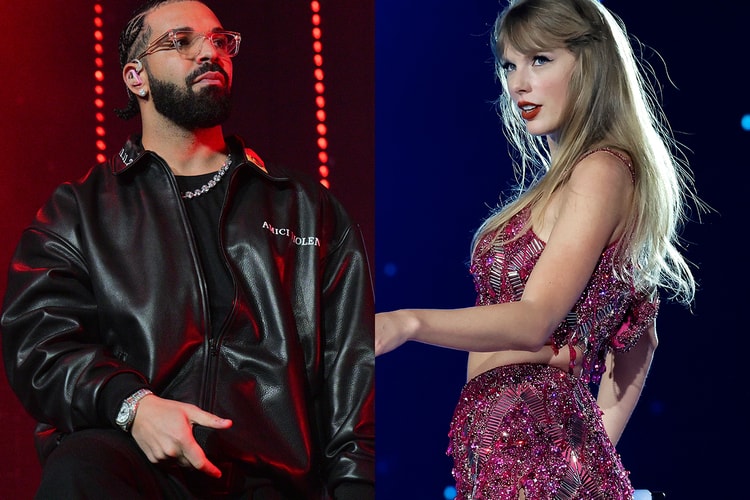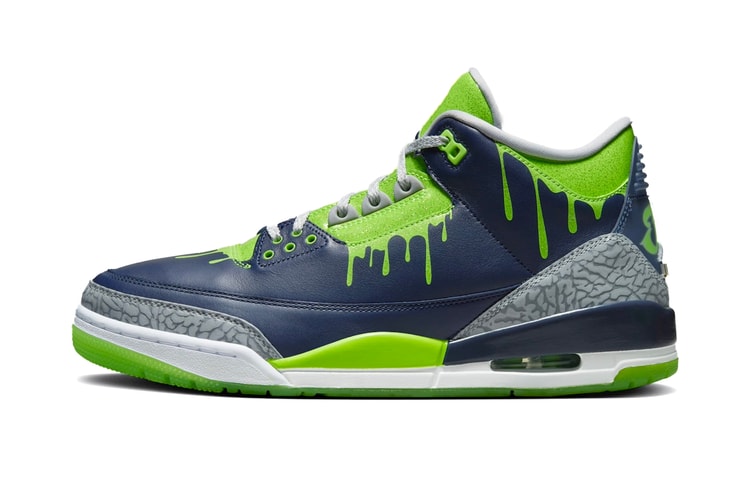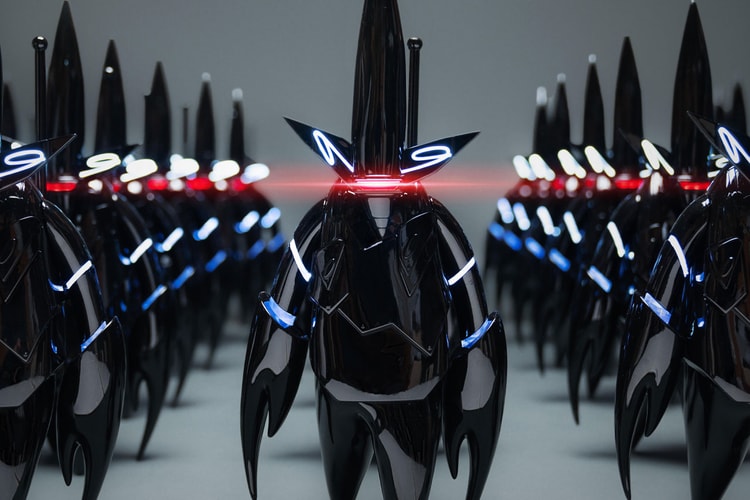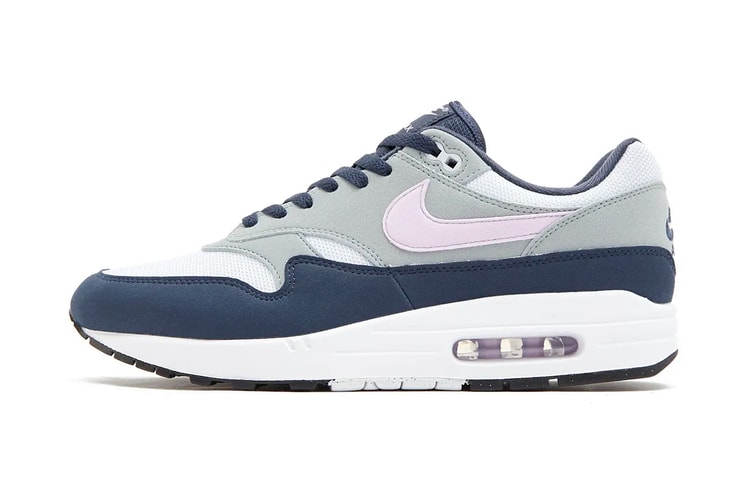The Purity of Wu-Tang Clan’s ‘36 Chambers,’ 30 Years Later
In this special Hypebeast retrospective, RZA takes us back to the album’s creation and shares never-before-published photos of the Clan.
30 years ago, the Wu-Tang Clan — a group of young men from Staten Island — came together to deliver a hip-hop album entitled Enter the Wu-Tang (36 Chambers). Named after a class of Chinese martial arts, the group’s debut project was brimming with stories from their “native land” of Shaolin. RZA, GZA, Ol’ Dirty Bastard, Raekwon the Chef, Method Man, Ghostface Killah, Masta Killa, Inspecta Deck and U-God told Shaolin tales of violence, drugs and incarceration over sinister, piano-ladened beats that were significantly more aggressive than the melodic West Coast sound that was prevalent in hip-hop at the time.
RZA remembers that time well, but being asked to describe the energy of 36 Chambers causes him to pause in thought. “Determination with intention. Intended determination, not blind determination,” he says, circling back to the question later on. When the recording of the album began in 1992, the Wu had a strong sense of intention and were determined to express their art, culture, skill set, sonic and even hip-hop perspective. “I would describe 36 Chambers as the capturing of untamed youth,” RZA says. Much of the group was in their early 20s — a time when many feel the need for rebellion, but can also the time when one has more awareness of the world that results in a deeper understanding of mortality. “For us, it was the violence and death in our community. These are things that happened in our youth. It had to be expressed out of us or it would have blown up inside of us,” he reveals, naming songs like “Bring Da Ruckus,” “Wu-Tang Clan Ain’t Nuthin’ ta F’ Wit’” and “Da Mystery of Chessboxin’” as examples of internal struggles that could have exposed itself in dangerous, physical ways if not through rhymes. RZA explains that in his community, especially during that era, a lot of men were either dead or in jail by the time they’re 25 years old. He was 22 when he started to work on 36 Chambers, so it was imperative that he find a way to express himself: “We found a way out by capturing and putting [our struggles] into music.”
“This is the best that hip-hop has put together, and that’s just how we felt. ‘Wu Tang Clan Ain’t Nuthin’ ta F*ck Wit?’ We’re telling you that this is nothing to f*ck with right here. This is that sh*t. You can’t f*ck with this.”
Looking back on it now, RZA didn’t realize how young they were. Growing up in New York City in the ‘70s and ‘80s rushed kids like him into adulthood, and he was riding a train from East New York to the Bronx alone at the age of nine. He couldn’t imagine asking his 14-year-old son to do that. “During those days, especially in the ‘70s, there was a chance that the Son of Sam was on that train, and there was a chance that somebody was going to rob David Berkowitz on that train,” he says. “There’s a chance that all these things could happen to you, so the city needs you to grow up quickly.”
The creation of 36 Chambers involved DIY methods and a lot of experimenting. While RZA wasn’t the one to direct the music video for “Protect Ya Neck,” he took charge of editing without even actually knowing how to edit, sitting next to the editor and sharing his vision. The DIY principles of editing the “Protect Ya Neck” video were also applied it to the post-production phase of the album; after recording 36 Chambers as different pieces of music, he went into a studio and stitched the project together like he would a movie, noting that he was surprised at the capabilities of then-fledgling editing software Pro Tools. “I didn’t know [Pro Tools] existed in a way that you could see the waveforms because in those days, if you used a sampler, all the data was just represented by numbers,” he says. “It wasn’t like you could look at the screen and see the waveform. I think Pro Tools and [fellow editing software] Sonic Solutions were, to my knowledge, the first few systems that gave someone that ability. And being the electronic geek that I am, I utilized it.”
“I think 36 Chambers is a combination of mastery mixed with exploration, and that added to the allure.”
RZA compares the process of 36 Chambers to mastering a form, “As Bruce Lee would say, be like water when you’re in a situation where the form isn’t known. But because you are a master of one thing, you’re able to adapt and play with another.” His work on the E-mu SP-1200 and Ensoniq ASR-10 sampler made him familiar with digital sampling actions like truncating, quantizing and splicing, which supported his work with Pro Tools even though he was a novice with the software. “Sometimes when you experiment, some great creations come out of that,” he says. “I think 36 Chambers is a combination of mastery mixed with exploration, and that added to the allure.”
Did Wu-Tang ever think the album was going to be this influential? Collectively, they were beyond proud of their work and wanted it to be more than just a passing trend. “To be honest with you, and this is going to sound so egotistical, but we was like, ‘This is the best sh*t,’” RZA answers with a hearty laugh. “This is the best that hip-hop has put together, and that’s just how we felt. ‘Wu Tang Clan Ain’t Nuthin’ ta F*ck Wit?’ We’re telling you that this is nothing to f*ck with right here. This is that sh*t. You can’t f*ck with this.”
“I think Dirty said in one of his interviews that the world needs a dose of this. This is good for music, good for the world and definitely good for hip-hop.”
What are your fondest memories of creating 36 Chambers?
Really being in the studio with the Wu-Tang Clan and playing back songs to one member that another member is on. When GZA recorded “Clan in da Front,” he came to the studio on the day the other guys didn’t. When they come into the studio, I hit play, they hear what we did last night, and it’s gonna inspire them for what they do tonight. Those are some of my fondest memories.
Method Man recently said, “I’ll never forget, y’all recorded ‘Clan in da Front’ and y’all played it 100 times.” We played in the studio, then we had to drive to a Wu-Tang appearance to perform “Protect Ya Neck,” and we played it all the way there in the car and all the way back.
Is there anything from the process of creating the album that you still apply to your craft today?
Yeah, of course. I mean, 36 Chambers is like the graduation of artists, right? It’s my graduation as a producer who produced songs for the neighborhood and on my own. I knew then that I can concisely put together an entire album that tells a story within itself. Even though it seems abstract, it feels like there’s a story there and these pieces all add to a story.
Since the completion of that album and throughout my career, I always have this same motivation to complete the story, even if it is, in an abstract form. I kind of relate it to Pulp Fiction, which came out around the same time. Even though I didn’t know Mr. [Quentin] Tarantino at that time, the film follows a very similar technique where although his film isn’t linear, it’s the complete story. 36 Chambers isn’t linear but it’s a complete story; if you ever watch the video of our first song “Protect Ya Neck,” it says that Wu-Tang is protecting the 13th chamber. We didn’t start off from one, we started in the middle.
“I think Dirty said in one of his interviews that the world needs a dose of this. This is good for music, good for the world and definitely good for hip-hop.”
If you could go back in time, would you change anything on the album, and do you think that change would affect how the record turned out?
I don’t have the answer to that question, but It felt complete. When 36 Chambers was all finished, I and the rest of the Wu felt satisfied. When it was done and we had it in our hands, it was almost like we didn’t make it — like it was good enough to listen to as if it’s not yours. That’s the coolest thing about it.
All you need is one to have determination. All you need is one to have the determined idea, but you need everyone to have the intention. If you have one person amongst you who can’t be deterred and everyone else behind is following with intention, you’ll definitely pierce through the rock.
Being a guy that’s not only rapping on the album but also the guy that controls the music, produced album and the arrangement, people used to ask me, “It says mixed, produced and arranged by the RZA. How do you do all that?” That’s what I did! [laughs]. I took the time to do it to the best of what I wanted to hear, to the best of the spirit that I wanted to share. At the time, no matter what nobody would ever say, they only could identify 36 Chambers as hip-hop. That’s what I wanted it to be. I didn’t want it to be identified as jazz, blues, rock, punk rock, none of that, and even though it probably can fit in all those categories, it was solely built off of what I felt hip-hop was. As time went on I moved into different chambers, but there was no other description for the album besides hip-hop.
“There’s going to be something that guides you through [youth] that’s pure, and I think 36 Chambers is one of those things.”
During the early days of Wu-Tang, would you say that “one” was you?
As they say, self-praise don’t mean a thing, but I am the abbot. I was super, super duper determined. I knew it and maybe the others had to believe that, but I knew what I knew. I can say that Dirty knew what he knew too. We spent the most time dreaming, talking and visualizing it.
With me being a scientist of sound and a scientist — if I wasn’t doing this, I’ll probably be doing something in the scientific world for us all to enjoy — I applied all of that with a determined idea. Like I said, I’ve humbled down, but I can’t sit there and falsify reality. I was super determined, and all I needed was everybody to have the intention behind me. At the end of the day, just follow me. Not like a shotgun, but like a nice, scattered laser beam.
How do you hope 36 Chambers will impact the generation of new listeners?
I will say that at the end of the day, everybody has to pass through a phase in life. In order to live, you’ve got to pass through your youth. You gotta become an adult in order to become the guy who’s going to be the president 30 years from now, the guy that’s going to be the policeman, the guy that’s going to be the nurse — they all got to pass youth. Some albums, some artists and some people are able to capture that moment, and those become your rite of passage.
It’s like if you had a Bob Marley moment. I don’t promote drugs, but regardless of whether it’s your first joint, an edible or tea, you pass through it. There’s going to be something that guides you through it that’s pure, and I think 36 Chambers is one of those things. This is one of those albums that’s just like, “Yo, this is what my brain needed at this time of my existence.” There are other albums that do that as well, but there wasn’t a lot in hip-hop at that time. I think other artists are striving to create those now as well. As the smoke clears, you’ll find one here and one there.
30 years from now, even if 36 Chambers isn’t popular, somebody will hear it and go, “Yo Jim, you ever hear this before?” It’ll get passed back around again, because it has a capturing of something that’s pure.






















